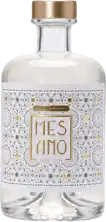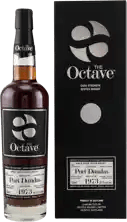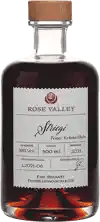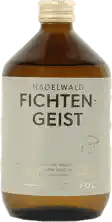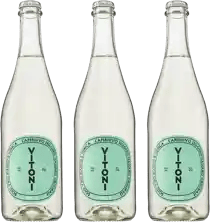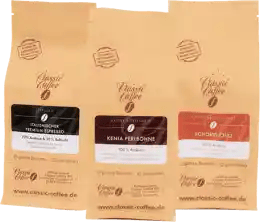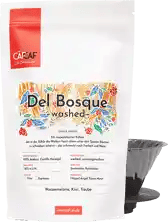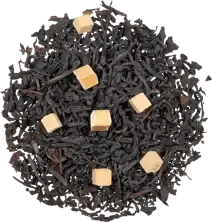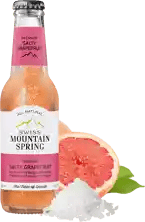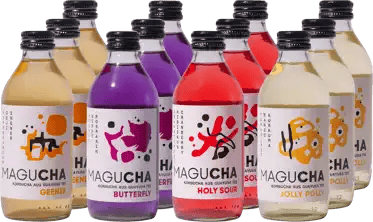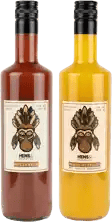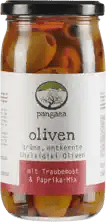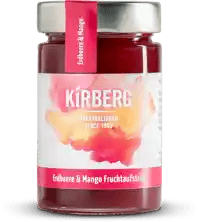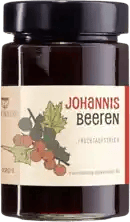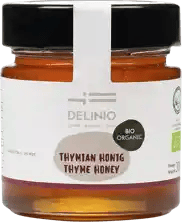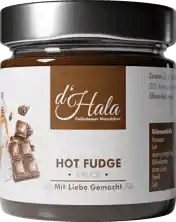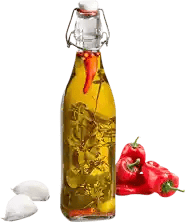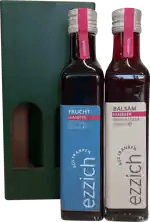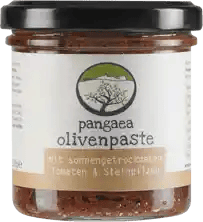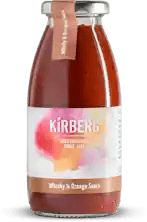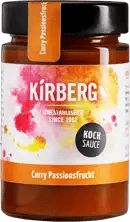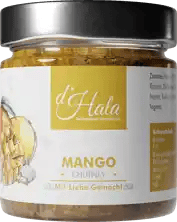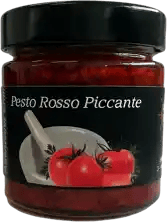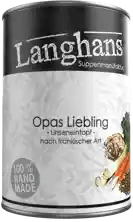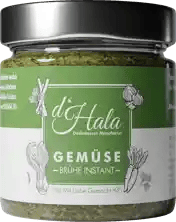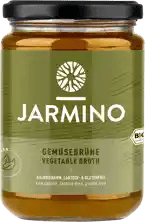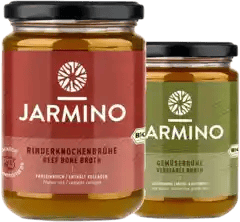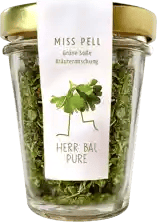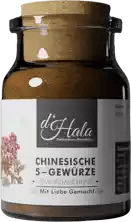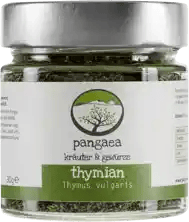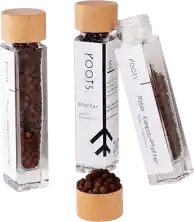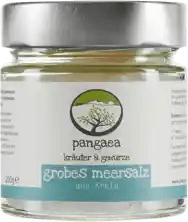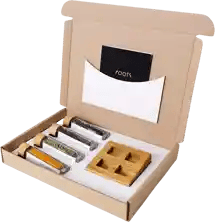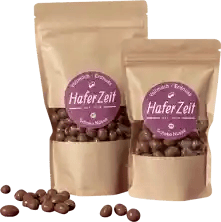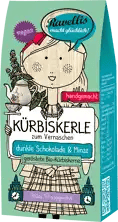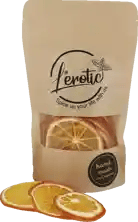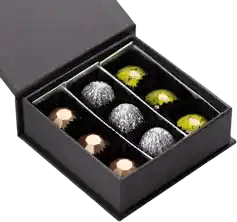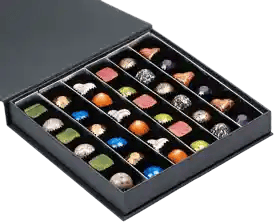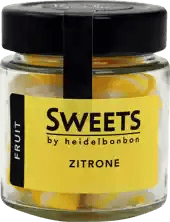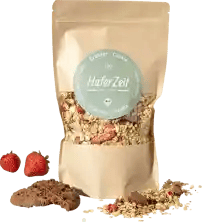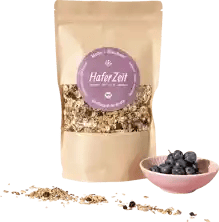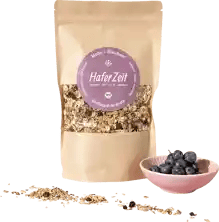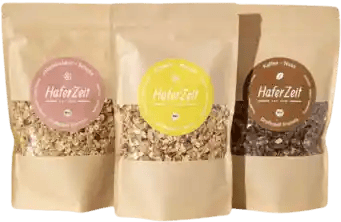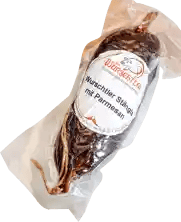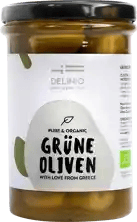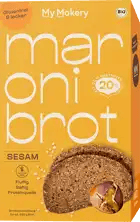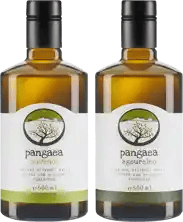Quality instead of quantity!
7,000 independent products
No mainstream
7,000 independent products
Matcha - everything you need to know about the green wonder drink
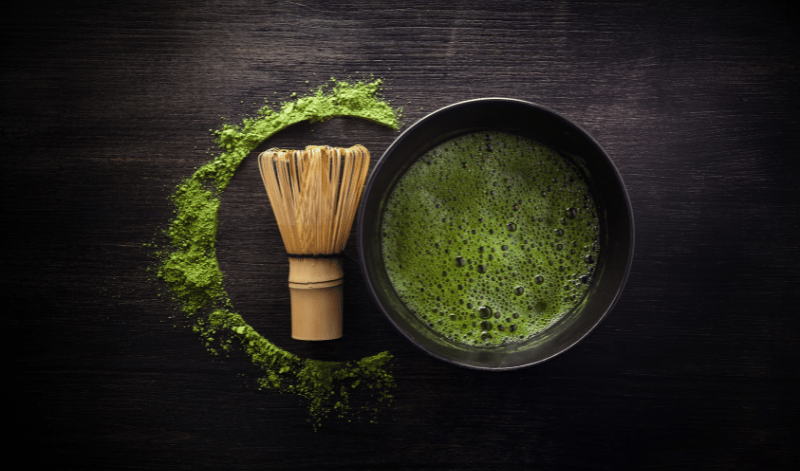
The most important facts summarized for you:
- Matcha originates from Japan and is an integral part of the traditional tea ceremony
- Matcha consists of powdered green tea made from shaded leaves
- The powder is traditionally whisked with a bamboo whisk (chasen) in a special bowl (chawan)
- Matcha has a creamy texture and tastes tart, refreshing and has a pleasant sweetness
- You can tell the quality of matcha tea by its color
- Matcha is used today not only as a tea but also as a popular ingredient in food and drinks
Matcha is more than just a green tea powder - it's a lifestyle! It has been revered in Japan for centuries and has gained popularity in the West in recent years. Matcha is known for its health benefits, rich flavor and versatile uses in the kitchen. Let's delve into the fascinating world of matcha and discover why it's much more than just a drink.
What is matcha?
Matcha is a Japanese green tea in powder form. It is made from shaded tea leaves - i.e. leaves that have grown in the shade. This gives them a high content of chlorophyll and amino acids. The leaves are carefully selected, steamed, dried and then ground into a fine powder.
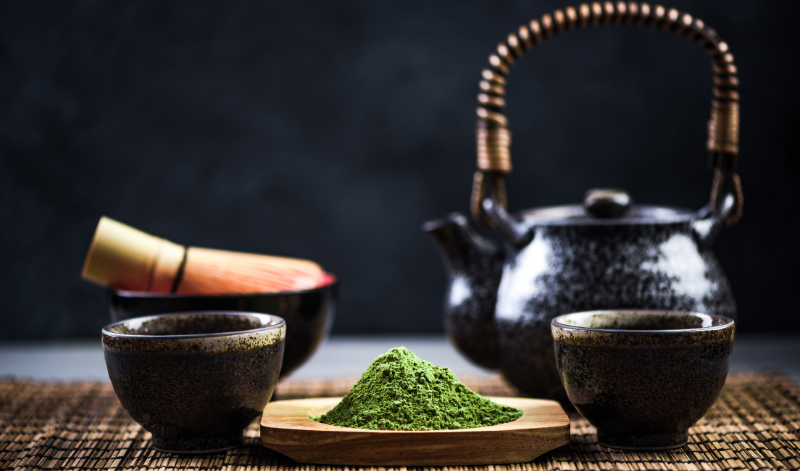
Matcha is powdered green tea" title="Matcha is powdered green tea
With its bright green color and intense flavor, matcha is traditionally used in Japan, where it is whipped with hot water to a creamy consistency. It is also increasingly being used in the kitchen, for example in ice cream, cakes and chocolate.
Matcha is popular with the health-conscious because of its antioxidants, vitamins and minerals. It offers a unique taste experience and health benefits, making it popular with foodies and tea lovers worldwide.
What does matcha taste like?
Matcha has an intense, slightly bitter taste. Many describe the taste of matcha as refreshing and invigorating with a pleasant sweetness. It often also has a slightly grassy or herbal taste. The consistency of matcha can be creamy and slightly powdery when prepared correctly. Overall, matcha offers a taste experience that differs from other types of tea and delights many people with its unique aroma.
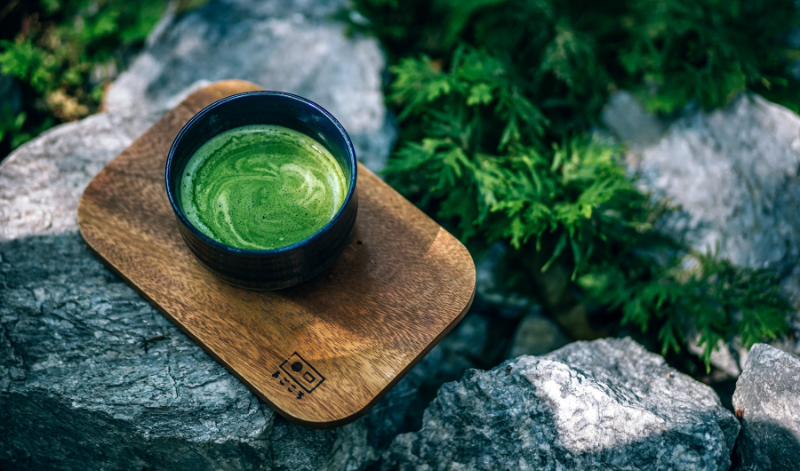
Matcha tastes tart, fresh and has a pleasant sweetness. When prepared correctly, matcha has a creamy texture.
The history of matcha
The history of matcha is truly fascinating and bears witness to a long tradition dating back to the sixth century BC. At that time, Buddhist monks in China developed this special way of preparing tea. Inspired by classic East Asian medicine production, the monks dried the tea and processed it into powder.
While matcha tea slowly fell into oblivion in China, it came to Japan with Chan Buddhism in the ninth century AD. There it established itself as an integral part of Japanese culture - and still is today.
Matcha in Japanese culture
Matcha plays an important role in the traditional Japanese tea ceremony, as it is prepared and enjoyed with great care. It is not just seen as a conventional drink, but rather as a symbol of calm and mindfulness that strengthens the connection to nature and one's own inner balance. Especially in our rather hectic everyday lives, the ceremony of drinking matcha can offer a soothing time-out to relax and recharge your batteries. The preparation of matcha requires skill and concentration, which leads to a meditative process that brings body and mind into harmony.
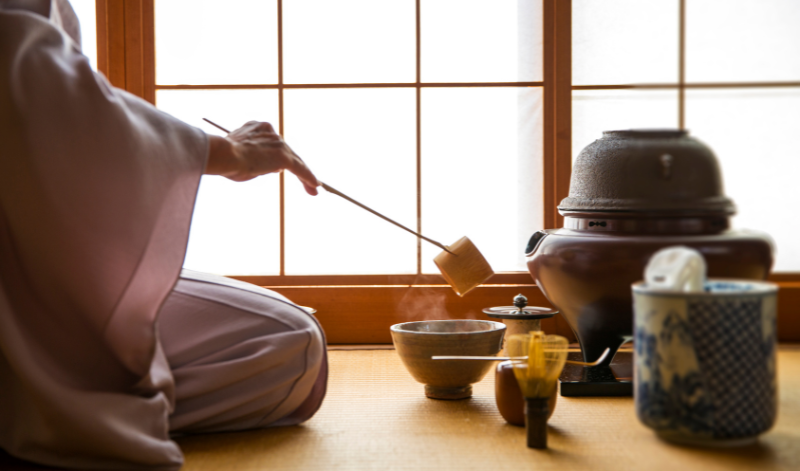
Matcha is an important part of the Japanese tea ceremony
Matcha is also an important part of the fascinating Japanese culture and art. Its vibrant green color symbolizes freshness and vitality, while its rich taste indulges the senses.
The tea powder is also increasingly used in other drinks such as lattes, smoothies or ice cream, as it has an invigorating effect and is soothing at the same time. The popularity of matcha has soared worldwide in recent years as more and more people discover its health benefits and unique taste. It is often touted as a natural remedy for detoxification, boosting concentration and energy levels as well as promoting general health. Matcha is a fascinating combination of tradition and innovation that holds a special place in both Japanese culture and the modern world.
Matcha - types & quality levels
Matcha is offered in different varieties or quality levels. These grades can make a significant difference to the taste, color and texture of the powder.
Ceremonial grade
The highest quality grade is the so-called "ceremonial grade" matcha. This is made from the most delicate leaves and is characterized by its bright green color and fine texture. The taste is mild, sweet and slightly bitter.
Ceremonial Grade Matcha is particularly suitable for the traditional Japanese tea ceremony or as a high-quality ingredient for various culinary applications.
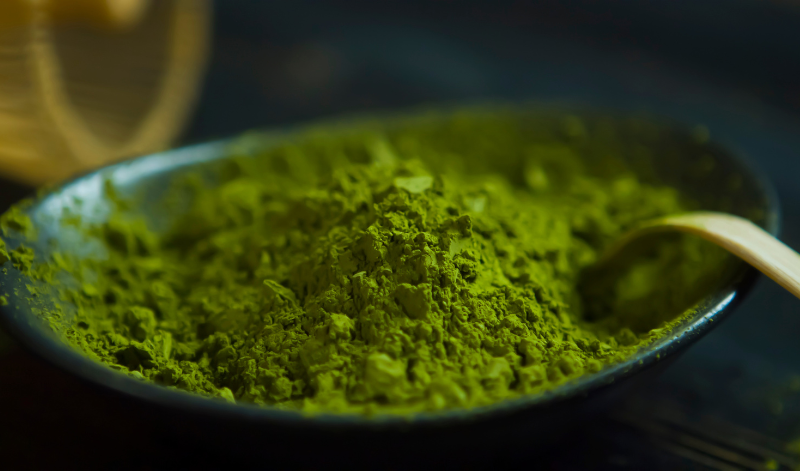
You can tell the quality by the color of the powder" title="You can tell the quality by the color of the powder
Premium Grade
One step below this is "premium grade" matcha. This is made from slightly older leaves and has a slightly darker color and a stronger taste. Premium grade matcha is suitable for everyday use as a tea or as an ingredient in smoothies, baked goods or desserts.
Culinary Grade
The third quality level is "Culinary Grade" matcha. This is made from older leaves and has an even darker color and a more intense taste with a slightly bitter note. Culinary grade matcha is ideal for cooking and baking, as its stronger aroma harmonizes well with other ingredients.
Gyokuro
Finally, there are some special varieties such as "Gyokuro", where the tea plants are shaded for two weeks before harvesting to produce a particularly sweet taste.
It is important to note that the quality of matcha depends not only on the grade, but also on the growing area, harvest time and processing. It is therefore advisable to try out different brands and manufacturers to find the matcha that best suits your personal preferences and requirements.
Fascinating fun facts about matcha
- Whole leaf benefits: Unlike other teas where you only drink the infusion, with matcha you consume the whole ground leaf, which means you absorb more nutrients.
- Energy boost: Matcha contains caffeine, but compared to coffee, it provides a more consistent and longer-lasting energy boost without the jitters.
- Unique preparation: Traditionally, matcha is brewed with a bamboo whisk (chasen) in a special bowl (chawan).
- Most expensive type of tea: Due to its complex cultivation and production process, matcha is one of the most expensive types of tea in the world.
- Color as an indicator of quality: The intensity of the green color of matcha is an indicator of its quality; the brighter the green, the higher the quality.
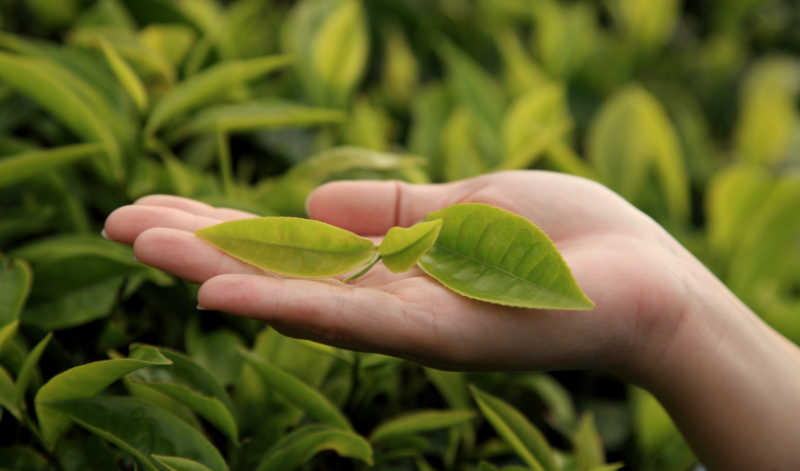
Unlike other types of tea, the whole leaf is used for matcha.
Matcha preparation methods
There are different ways of preparing matcha, each with its own advantages and taste profiles.
Traditional preparation
The most traditional method of preparing matcha is undoubtedly the Japanese tea ceremony. In this solemn ceremony, the high-quality matcha is whisked with a bamboo whisk (chasen) in a special bowl (chawan) until it reaches a wonderfully creamy consistency. This artful preparation requires patience and precision to ensure that the end product offers a perfect taste experience.
Infusing with hot water
Another popular preparation method is to simply pour hot water over the matcha powder. This method allows for quicker preparation and is ideal for everyday use.
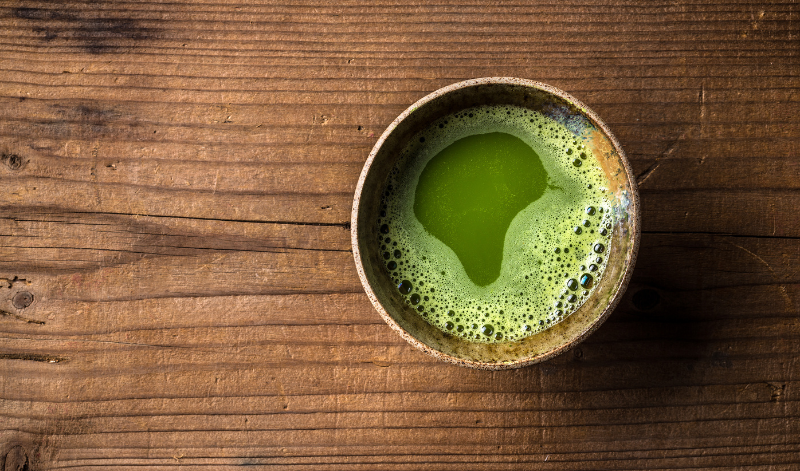
Instead of the meditative tea ceremony, you can also simply infuse matcha with hot water.
Creamy matcha latte
For those looking for a creamier texture, there is also the option of mixing matcha with milk or plant-based milk. This method is often referred to as "matcha latte" and gives the drink a smoother taste and a velvety consistency.
It is important to note when dosing, regardless of the preparation method: Due to the intense flavor, start in small quantities and then adjust as needed.
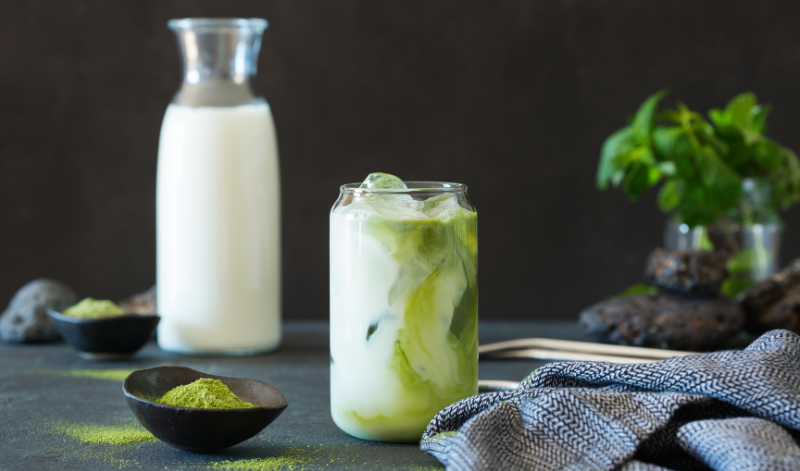
You can also prepare matcha with milk for an even creamier taste
Matcha - frequently asked questions & answers
1. what is the difference between matcha and regular green tea?
The main difference between matcha and normal green tea lies in the production process. In matcha, the tea leaves are shaded before harvesting to increase the chlorophyll and amino acid content. The leaves are then separated from the stems and veins, steamed, dried and ground into a fine powder. In contrast, with normal green tea, the leaves are steamed or roasted after harvesting, rolled and then dried.
2. how many cups of matcha tea are allowed per day? Or how much powder?
It is recommended not to drink more than 1-2 cups of matcha tea per day, which corresponds to about 1-2 grams of matcha powder. However, the exact amount may vary depending on individual caffeine tolerance and health condition. It is important to listen to your body and be aware that an overdose of caffeine can have undesirable side effects. Therefore, it is advisable not to exceed the recommended amount and instead enjoy the beneficial effects of matcha tea in moderation.
3. what are the health benefits of matcha?
Matcha contains a high concentration of antioxidants as well as vitamins and minerals such as vitamin C, iron and potassium. Matcha is believed to boost metabolism, support immune function, provide energy and improve concentration. Due to its high content of L-theanine, it can also have a calming effect.
4 How do you prepare matcha?
To prepare matcha, put about a teaspoon of the powder in a bowl or cup. Then add hot, but not boiling, water and stir with a bamboo whisk or a whisk until the powder has completely dissolved and a creamy consistency is achieved. Traditionally, matcha is prepared in a ceremony, but it can also be enjoyed simply at home.
5. can matcha also be used in other recipes?
Yes, matcha can be used in a variety of recipes. The finely ground powder gives dishes a bright green color and a unique tea flavor.
- Baked goods: Use in cakes, cookies and muffins. Gives a green color and a subtle tea flavor.
- Drinks and desserts: Making matcha ice cream, adding to smoothies and yogurt.
- Savory dishes: As a seasoning for salads and dressings, as a rub for meat and fish, to enhance pasta dishes.
6 Why has matcha become so popular?
Matcha has become popular for several reasons. Firstly, it offers health benefits through antioxidants, vitamins and minerals that boost the immune system and improve well-being.
Secondly, matcha provides a smoother energy boost than coffee, thanks to the combination of caffeine and L-theanine, and without typical caffeine side effects.
Thirdly, its unique, slightly sweet and tangy taste is ideal for drinks and food. Finally, the traditional preparation with a bowl and bamboo whisk creates an aesthetic and meditative experience.
These aspects make matcha a popular, healthy alternative to other caffeinated drinks.
7 How much caffeine does matcha have?
Matcha contains more caffeine than other teas because the whole leaf is used. One cup of matcha contains around 30 to 70 milligrams of caffeine, although the amount varies depending on the quality of the tea and how it is prepared. Matcha also contains L-theanine, which reduces the caffeine effect and provides a feeling of calm alertness. For those sensitive to caffeine, switching to milder Sencha or Bancha is an option. Matcha offers an energy boost without the typical side effects of too much caffeine.
Matching products to the article
Recent articles
-
24 JulDrinks advent calendar: The best gin, whisky & beer calendars for the pre-Christmas period
-
24 Jul"The quality of Languedoc wines simply amazed me" - An interview with two noses for wine
-
10 JulLimoncello - All about the Italian lemon liqueur
-
10 JulAll about lemonade - a world-famous classic
-
18 JunMarder Edelbrände: Germany's best single malt whisky
-
06 JunEuro 2024: Beer, soccer and singing!
-
06 JunThe 11 best gins for the 2024 European Championship summer
-
29 MayThe art of fermentation: discover the amazing benefits for your health
-
28 May"It sounds crazy, but it tastes fantastic!" - Interview with a pizza chef
Brilliant!

Bitte bestätige deine Anmeldung noch eben - du hast eine Bestätigungsmail von uns. Klicke darin auf den Link. Danach bekommst du deinen Rabattgutschein.




















